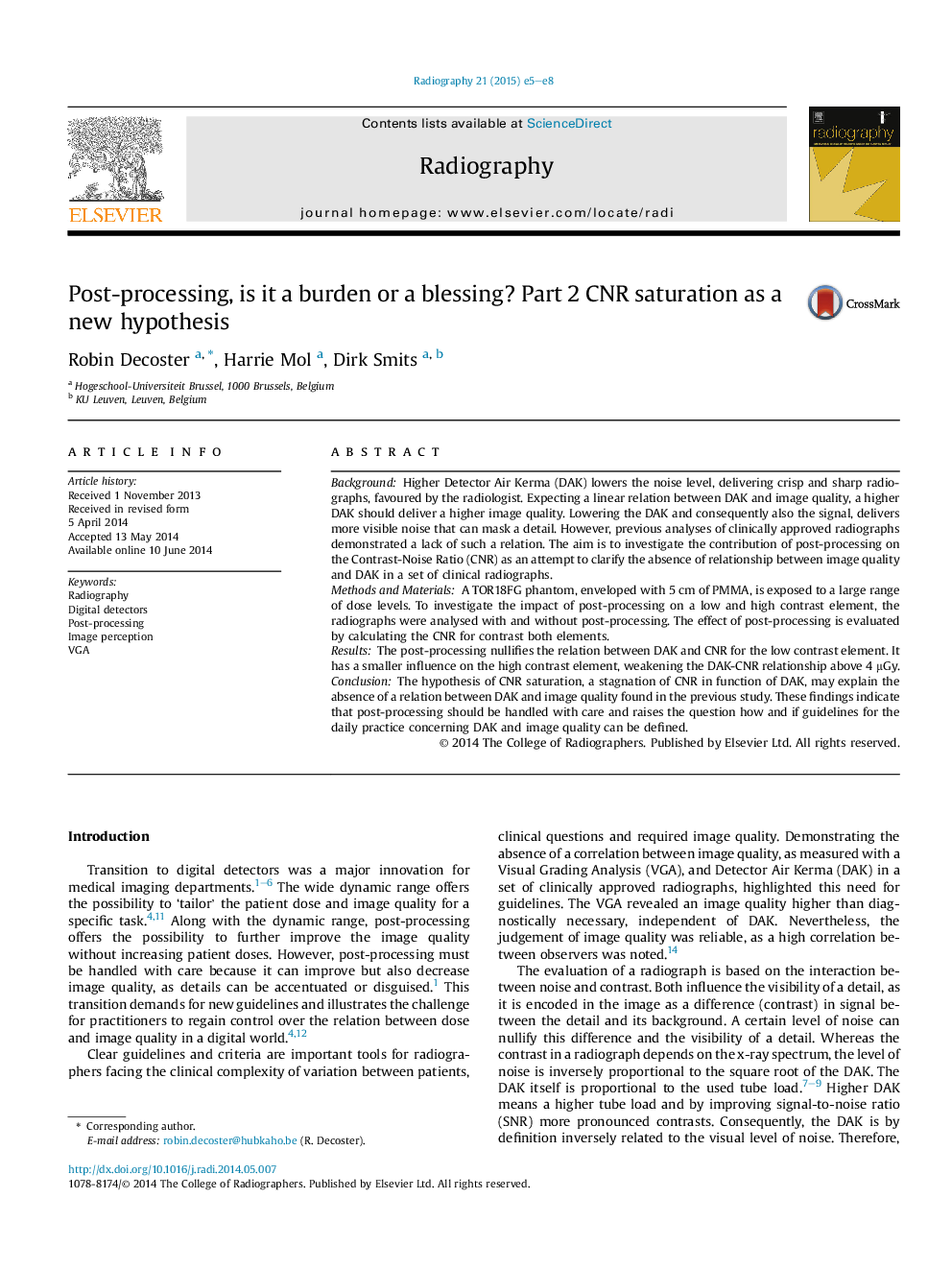| Article ID | Journal | Published Year | Pages | File Type |
|---|---|---|---|---|
| 2738370 | Radiography | 2015 | 4 Pages |
BackgroundHigher Detector Air Kerma (DAK) lowers the noise level, delivering crisp and sharp radiographs, favoured by the radiologist. Expecting a linear relation between DAK and image quality, a higher DAK should deliver a higher image quality. Lowering the DAK and consequently also the signal, delivers more visible noise that can mask a detail. However, previous analyses of clinically approved radiographs demonstrated a lack of such a relation. The aim is to investigate the contribution of post-processing on the Contrast-Noise Ratio (CNR) as an attempt to clarify the absence of relationship between image quality and DAK in a set of clinical radiographs.Methods and MaterialsA TOR18FG phantom, enveloped with 5 cm of PMMA, is exposed to a large range of dose levels. To investigate the impact of post-processing on a low and high contrast element, the radiographs were analysed with and without post-processing. The effect of post-processing is evaluated by calculating the CNR for contrast both elements.ResultsThe post-processing nullifies the relation between DAK and CNR for the low contrast element. It has a smaller influence on the high contrast element, weakening the DAK-CNR relationship above 4 μGy.ConclusionThe hypothesis of CNR saturation, a stagnation of CNR in function of DAK, may explain the absence of a relation between DAK and image quality found in the previous study. These findings indicate that post-processing should be handled with care and raises the question how and if guidelines for the daily practice concerning DAK and image quality can be defined.
